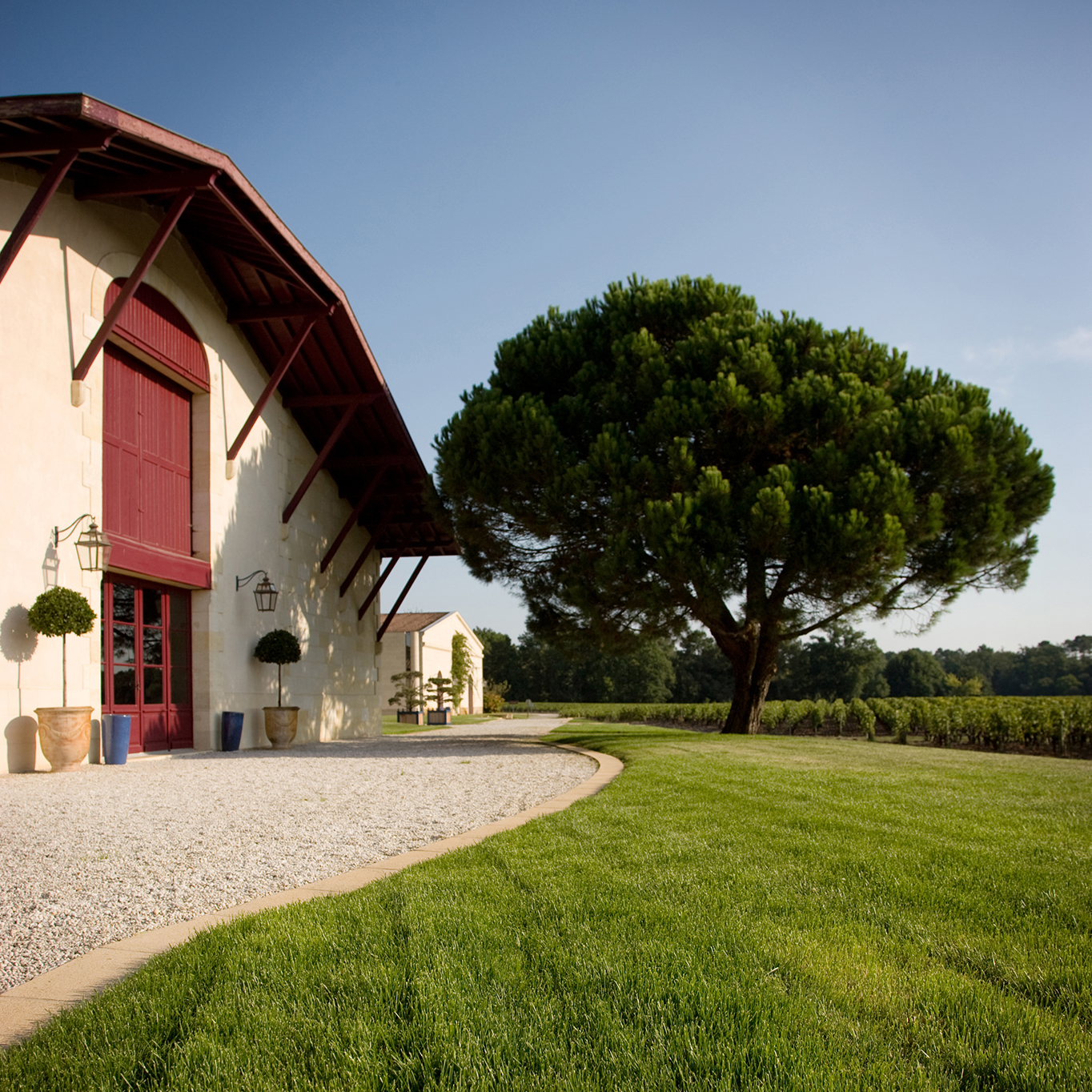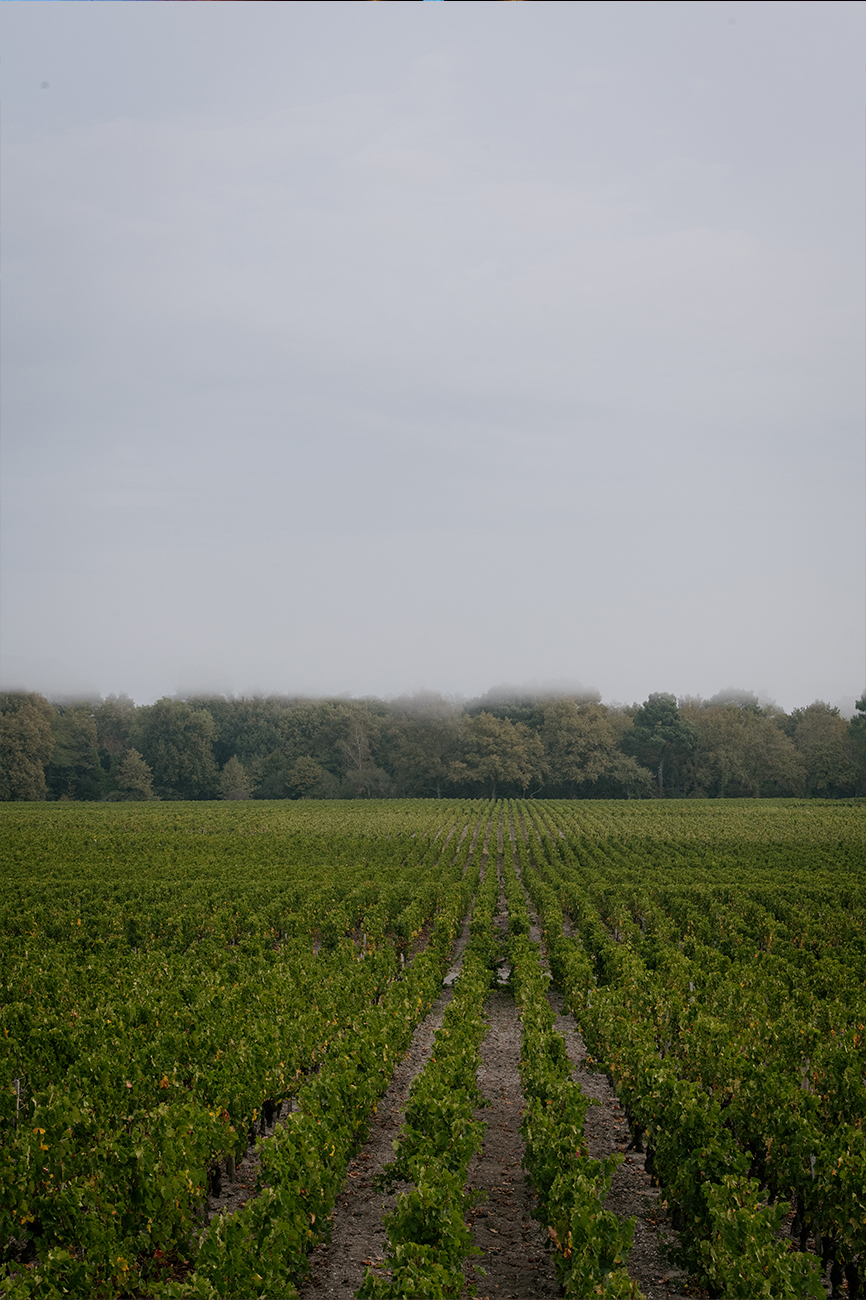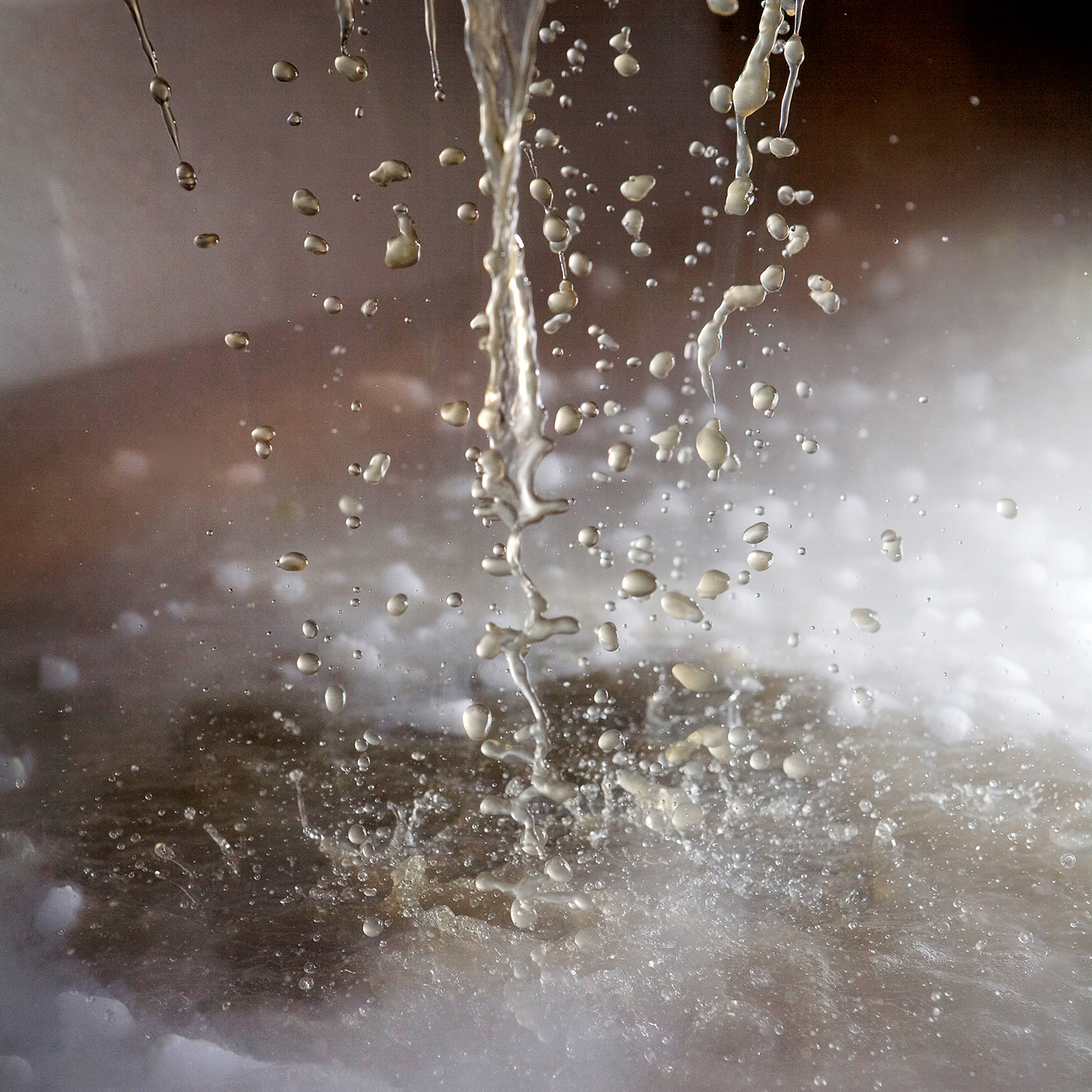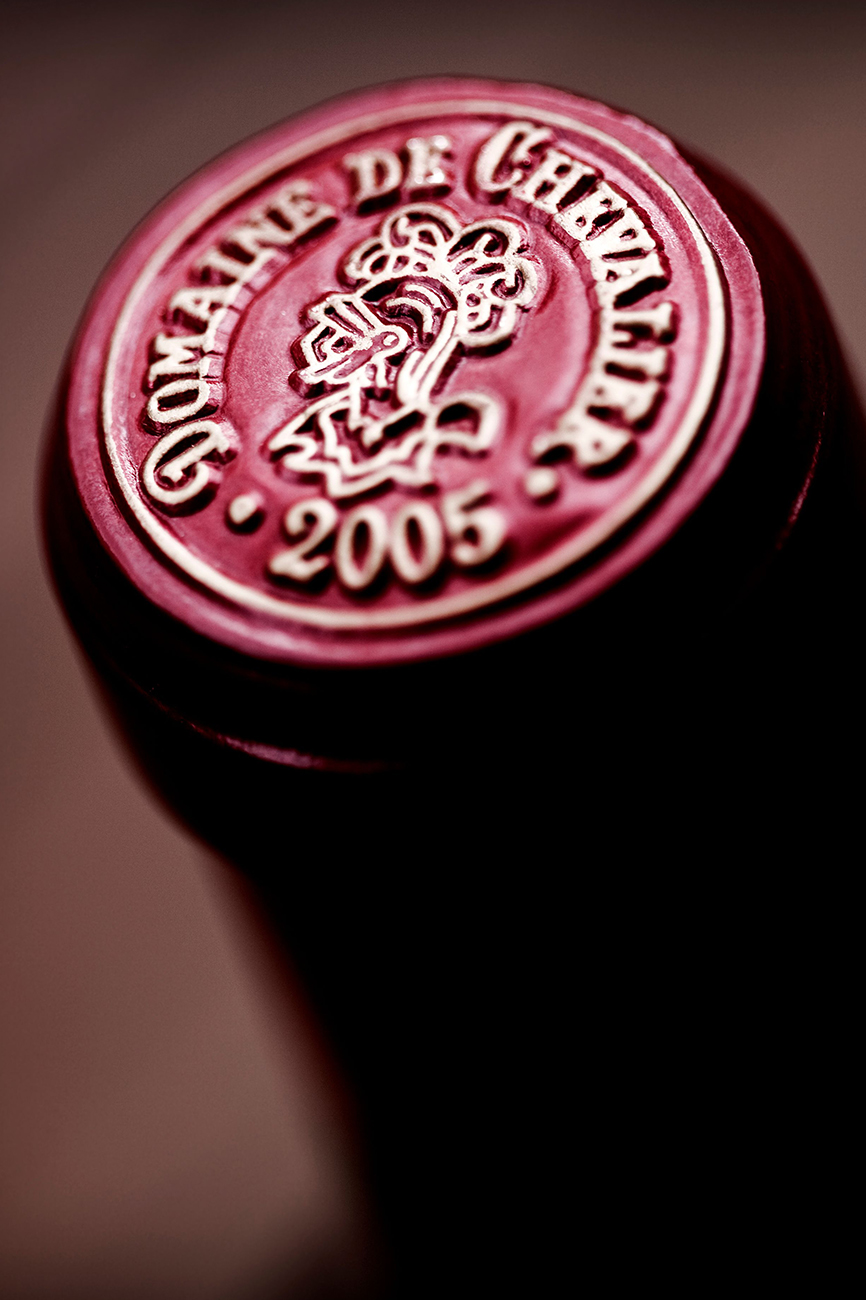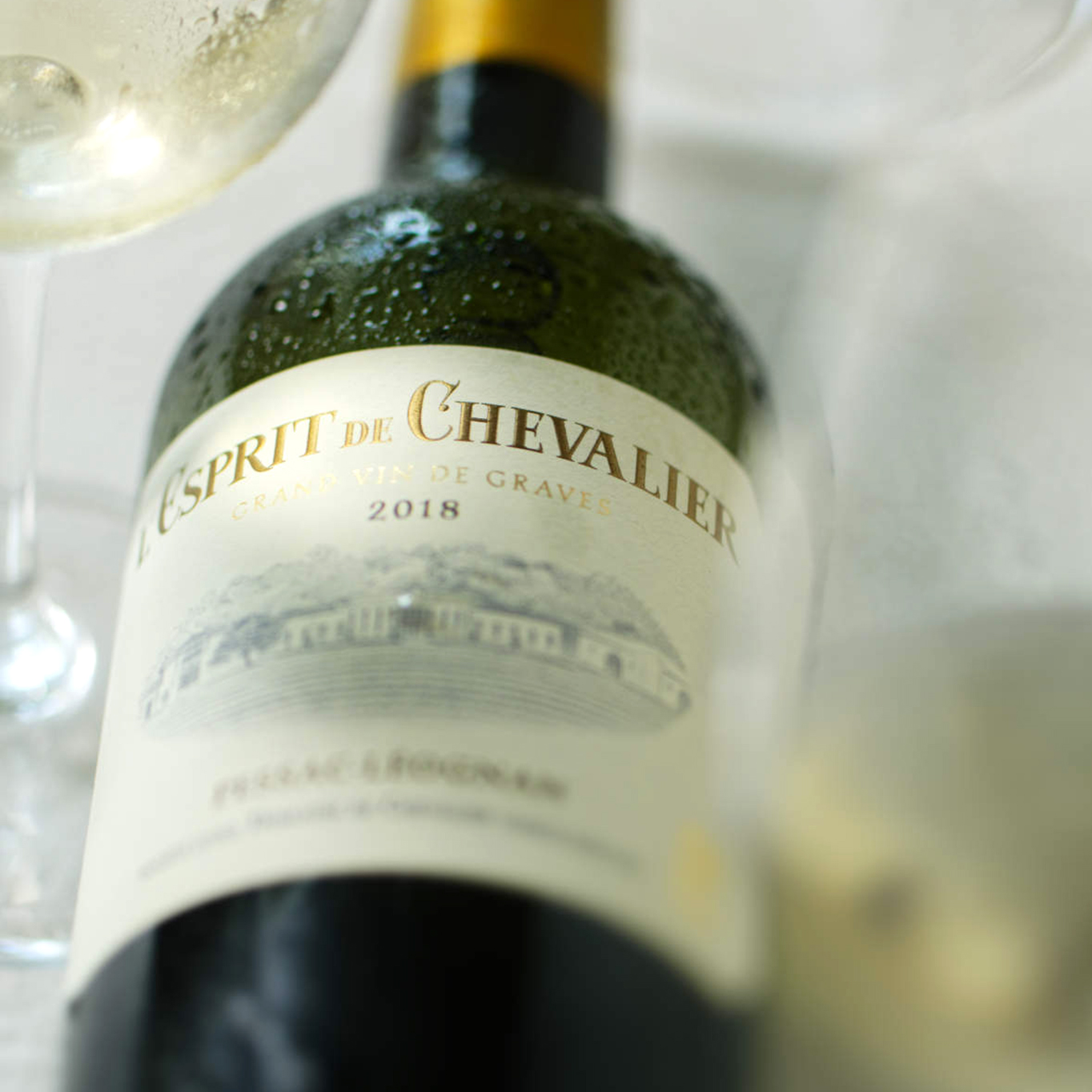only a great terroir can
produce a great wine
Environmental
and ecological
approach
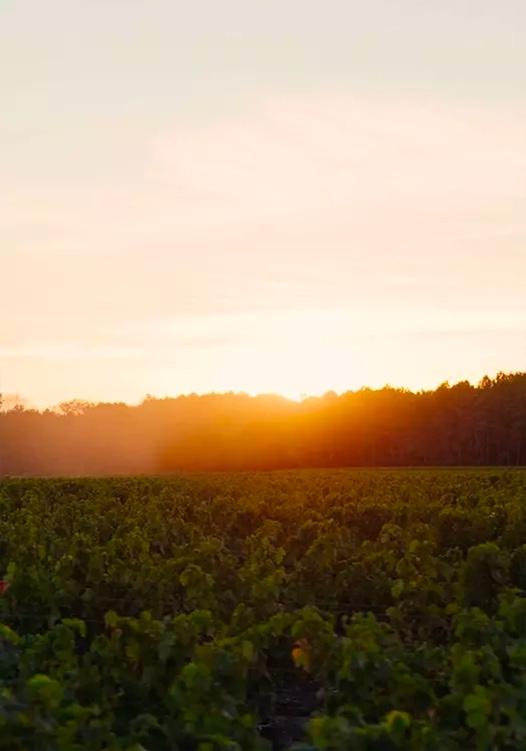
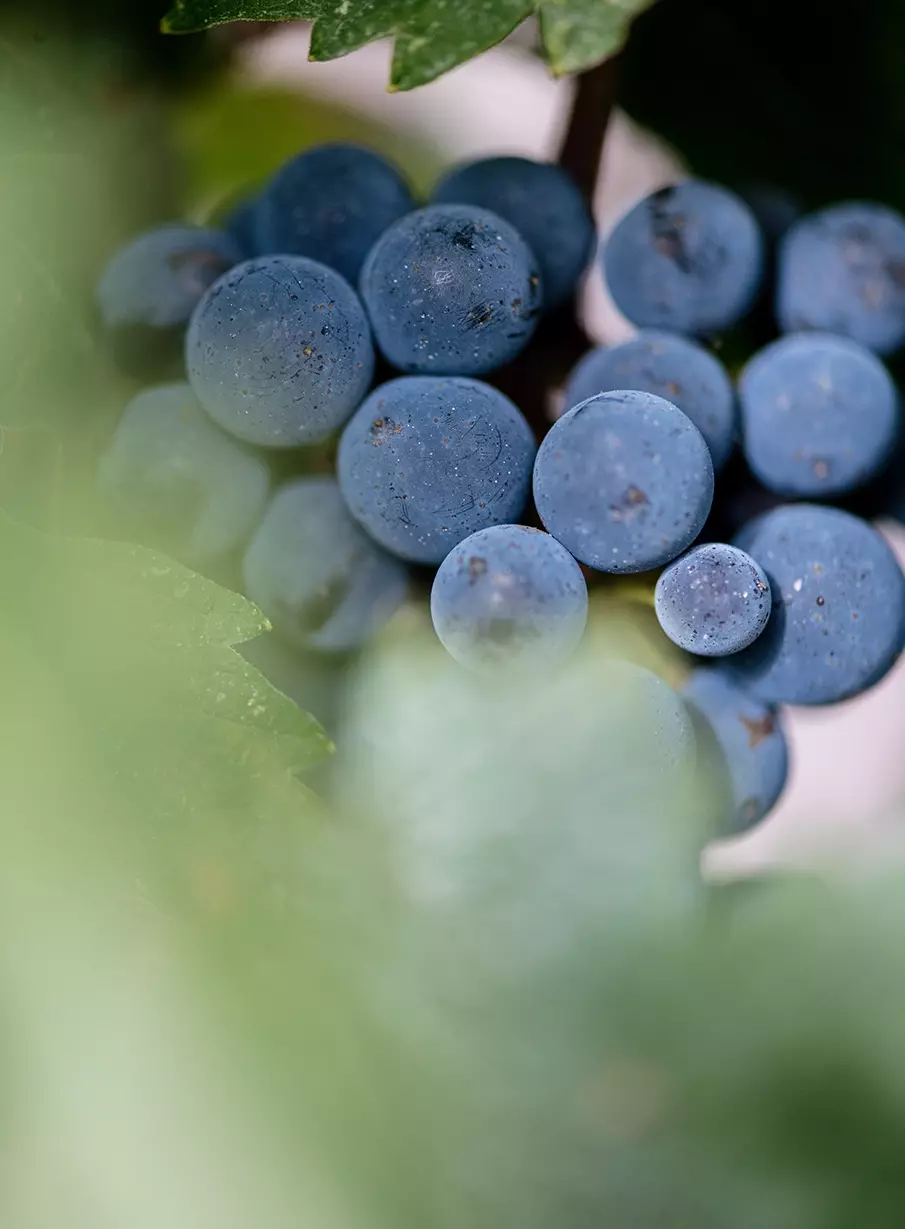
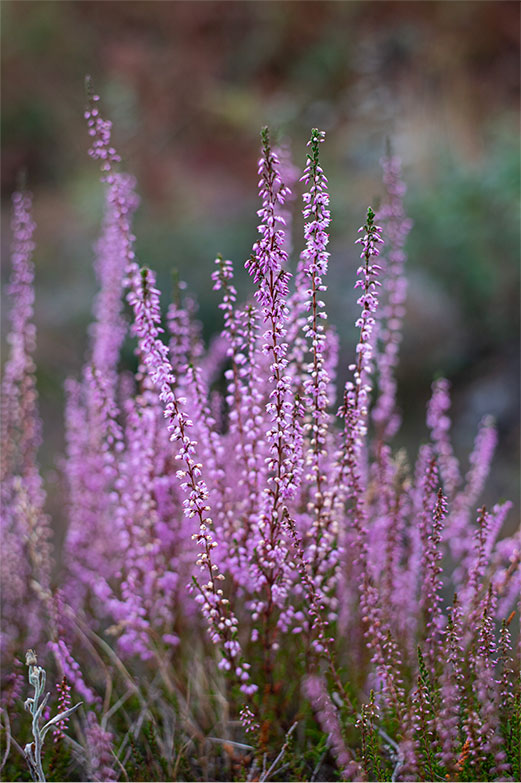
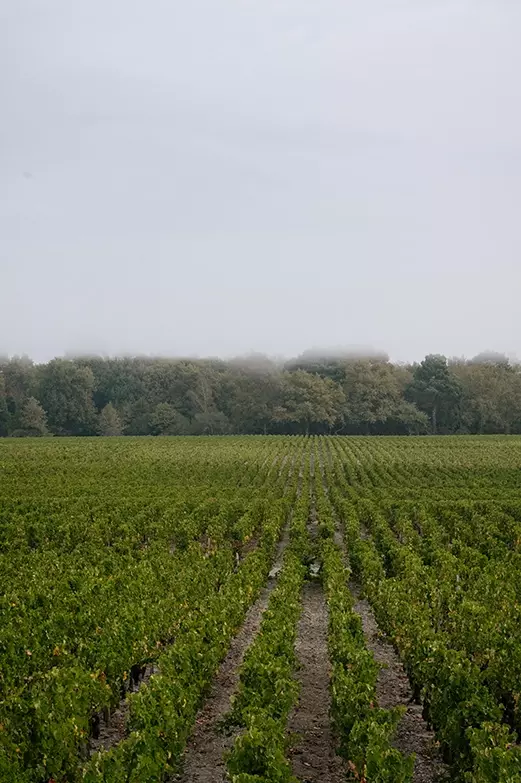
A vineyard
in the heart of the forest
At Domaine de Chevalier, the historic co-existence of vineyard and forest is a major natural asset…
Protected by its vast wooded backdrop, untouched by any outside influence, the vineyard benefits from a microclimate and biodiversity providing benefits that combine to create a high-quality ecosystem.
It is through in-depth knowledge of the identity of our terroir, with its poor and complex soils, its particular environment, that we have been able to put in place the conditions for outstanding production. At Chevalier, the estate’s ecosystem is both a natural balancing factor and the trigger for long-term thinking, inscribed in the genes of a philosophy of the land…
A long-term
ecological
approach

From the outset, the terroir at Chevalier has never had to suffer from the use of harmful products, such as herbicides or chemical fertilisers, which can permanently damage the health of the plants and the balance of the soil.
At the same time, changes in cultivation and technology have been permanently underpinned by ecological thinking:
- Herbal infusions (+) Horsetail, nettle, willow and various other preparations are used to stimulate the plant’s immunity.
- Natural defence and ecological resilience(+) In the context of organic and biodynamic farming, a series of meticulous prophylactic measures are applied to prevent fungal disease.
- Seedlings(+) Chosen according to the seasons and the soil type, seedlings contribute to the life of the soil and the microbial fauna by providing organic matter, oxygen and natural nitrogen.
- Precision work(+) Neither too much nor too little… It is a question of acting with measure and precision, at the right time, according to the plant’s needs…
- Influence of the forest(+)With its microclimate and biodiversity, the forest is an integral part of the terroir of Domaine de Chevalier.
- Beekeeper(+) Thibault Chaumont works as a beekeeper at Chevalier. The beehives, spread throughout the estate, produce various types of honey that reflect the great floral diversity and biological quality of the environment.
- Energy-positive cellar(+) Since 2012, a large part of the estate’s electricity consumption has been generated on site on a photovoltaic solar farm.
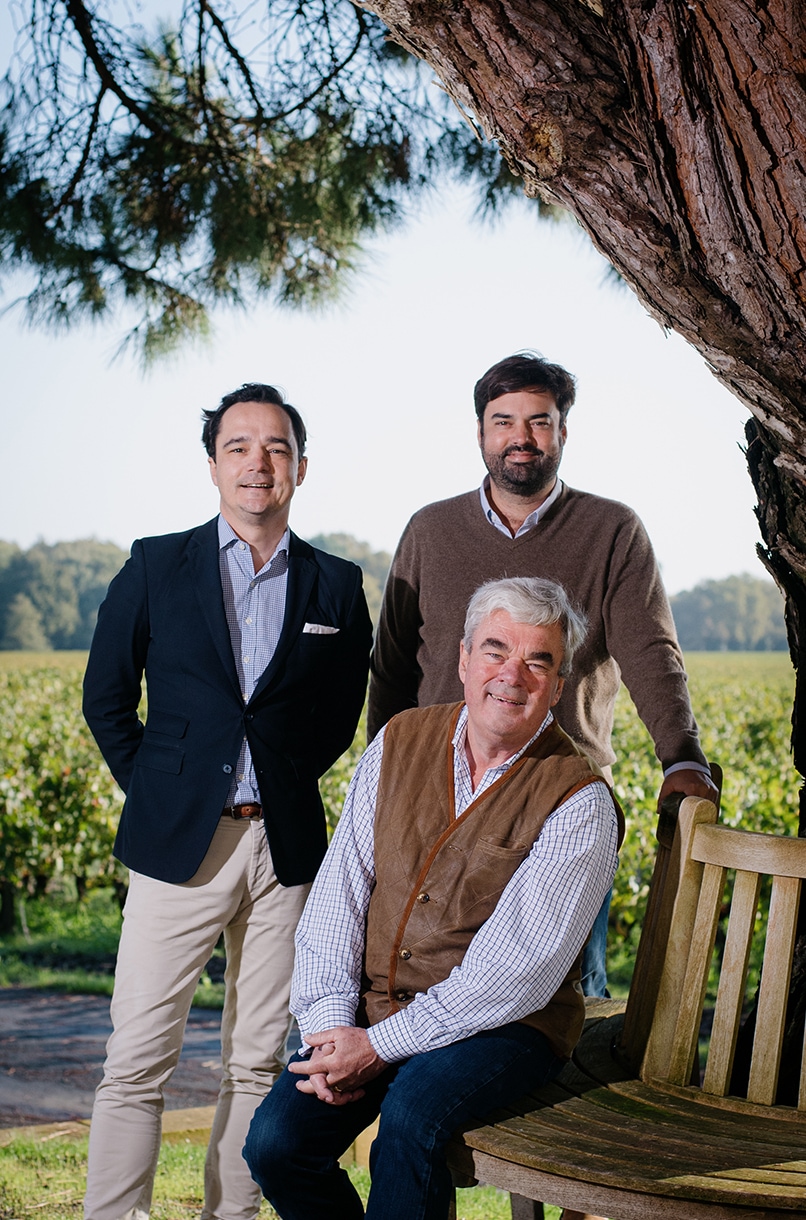
A Decisive
Step
a fundamental step
Since 2021, the conversion to organic and biodynamic principles across all the vineyards managed by Domaine de Chevalier has been a decisive step on the path set out as early as 2010.
The choice of organic and biodynamic farming is not a casual commitment. It is a complex process, full of doubts and questions, based on an intimate relationship with the plant and its environment. It requires that special sensitivity, that permanent attention, which alone makes it possible to open up to the life of nature and the soul of a terroir. It is undeniably a difficult, long-term approach, and constantly challenging. But, with humility, we constantly make progress…
The greatest wine of my life
is the one I will make tomorrow…
The Chevalier
terroir
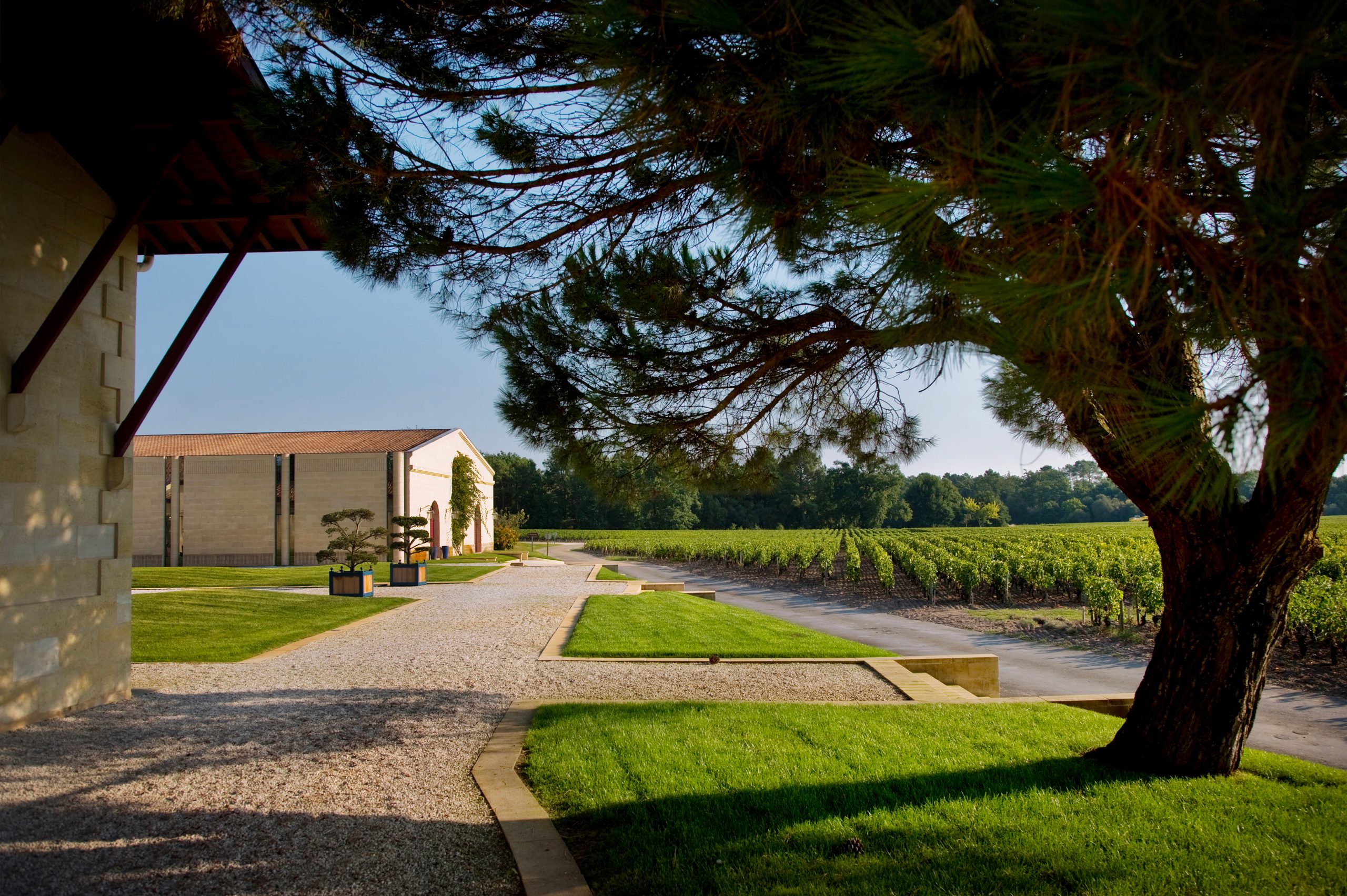
It might be thought that the Chevalier terroir is difficult, capricious…
But it is exceptional and capable of producing a remarkably early harvest if it is treated with the respect it deserves… It can be said that a great wine is always born in extreme conditions, on a difficult terroir, and even, paradoxically, that it is from this difficult character that it draws its greatness…
In truth, a great terroir produces a great wine in places where nothing else grows but the vine.
The marked influence
of the forest

Intimate knowledge
of the terroir

A vineyard in constant development
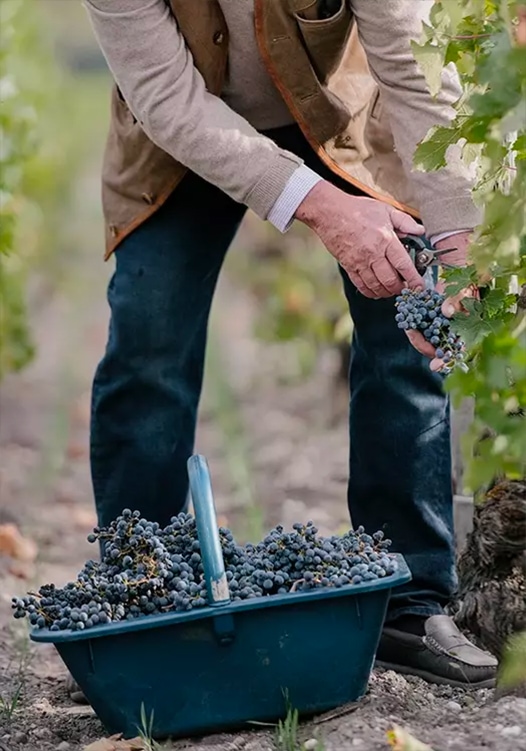
By accentuating thermal contrasts, this environment creates a greenhouse effect in hot periods, which favours the ripening of the grapes. In contrast, it increases the risk of frost in cold periods. With regard to this problem, we have taken a number of measures to effectively reduce the risks, principally the gradual installation of anti-frost towers since 1982…
The fact remains that, perfectly isolated, with no immediate neighbours and in a single block, the vineyard benefits from an ecosystem of great quality with no risk of external infection.
The disadvantages traditionally associated with monoculture, namely the lack of plant diversity in the environment, are largely offset here by the beneficial presence of the forest, which thus plays the dual role of ecological protection of the environment and a provider of auxiliary fauna.
At Chevalier, it is through in-depth knowledge of the identity of our terroir, with its poor and complex soils, its particular environment, that we have been able to put in place the conditions for outstanding production: management of soil saturation with improvement of the drainage system, high planting density, majority presence of Cabernet Sauvignon for the red wines, Sauvignon for the whites, and also continuous research to adapt the grape varieties to the terroirs according to changes in the climate…
The estate covers around a hundred hectares of which 70ha are planted with vines, divided into 60ha for reds and 7ha for whites. Only 7 hectares for whites, you may ask? The reason is that the winemaking choices made for white wine at Chevalier are incompatible with large-scale production.
The choices made in the vineyard are the subject of constant research to continuously optimise the soil/plant relationship.
fine-tuned
management
As for the density of the vineyard, the quality of the terroir has led us to continue with the optimum 10,000 vines per hectare, following the example of the greatest growths (the average for the appellation is 6,500 vines). This formula creates healthy competition between the vines which, at harvest time, deliver small quantities of grapes with skins rich in colour, aromas and tannins. It allows the fruit to ripen perfectly and evenly, and gives it the extra complexity needed to make fine wines destined for ageing.
As for the grape varieties, once again it is the strong suitability of this gravelly terroir that has given us the opportunity to give pride of place to the two kings among grape varieties, Cabernet Sauvignon for the reds and Sauvignon Blanc for the whites.
white grape
varieties
70 % Sauvignon
30 % Sémillon
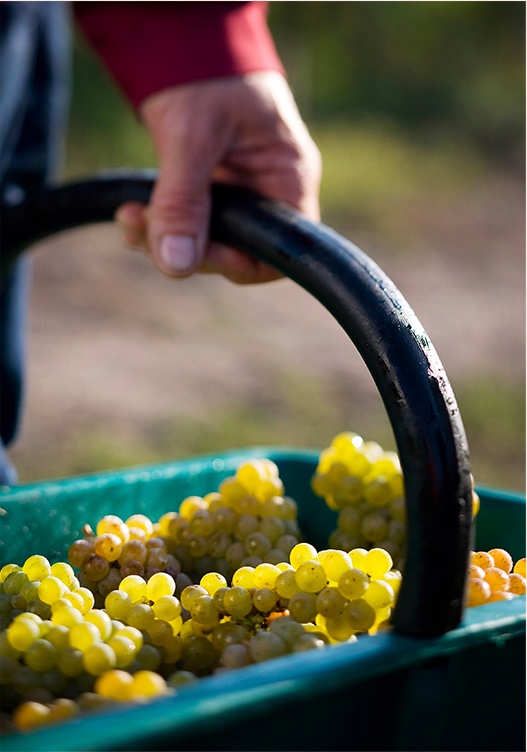
red grape
varieties
65 % Cabernet Sauvignon
30 % Merlot
3 % Petit Verdot
2 % Cabernet franc
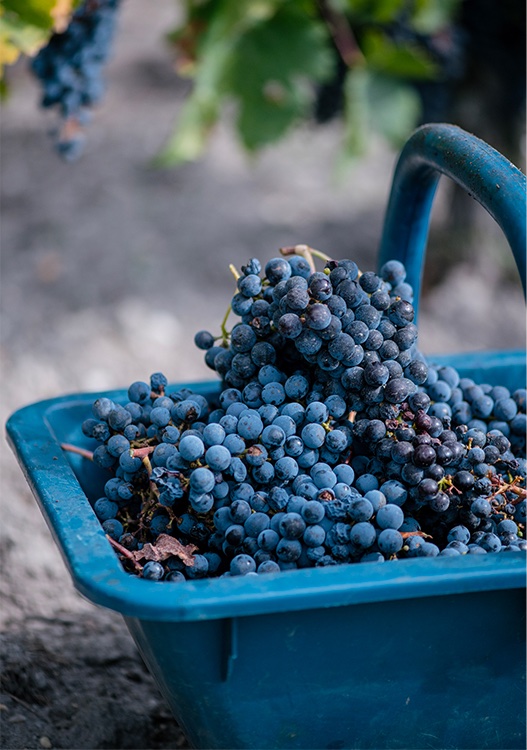
Each plot, each vine is different and hence is treated differently. As winegrowers, the essential approach to vineyard management is permanent observation, day by day. Each plot receives nutritional inputs and treatments that correspond to its specific needs, as we observe them…
Our approach is deeply ecological…

